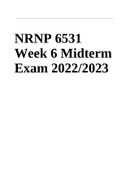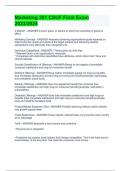Essay
AQA A Level Biology Model Essays
- Module
- Synoptic Essay
- Institution
- AQA
Comprehensive responses to 14 potential essay titles that haven't come up on the new AQA Biology specification yet, including 8 fully-developed model essays and 6 additional essay plans. Every essay contains a paragraph of off-the-specification content to help you achieve the top band and score 25/...
[Show more]












